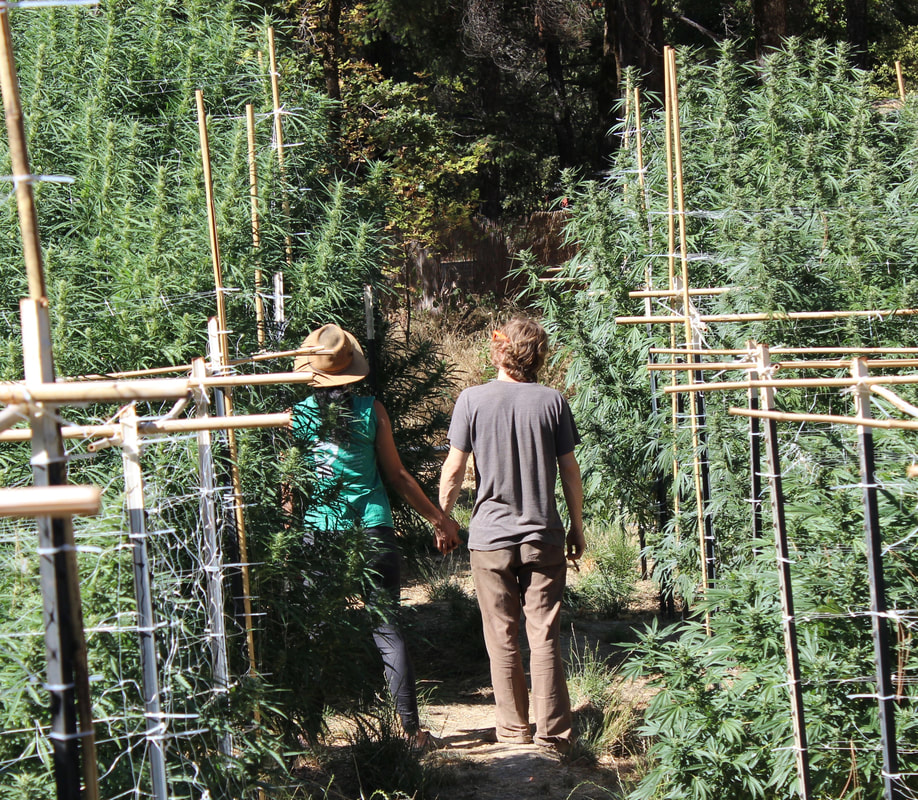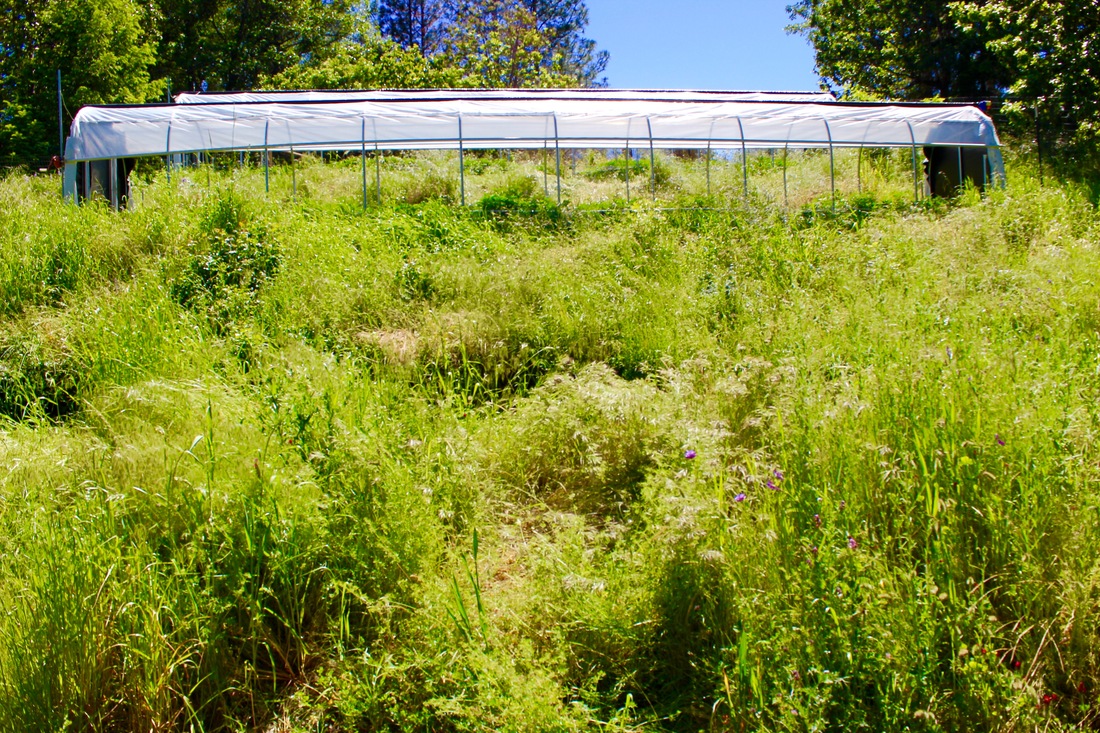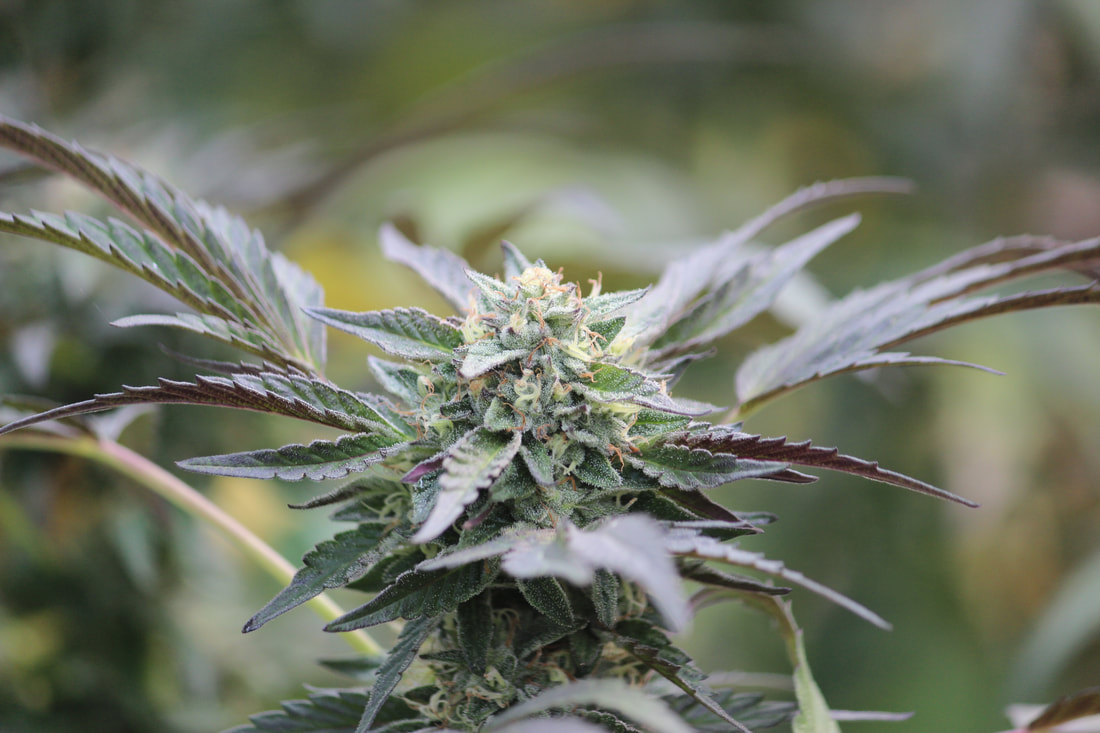|
Even to most organic growers it seems scary to put your trust in Nature completely and try not to interfere with the process that happens when humus is built up naturally in the soil, providing plants with a complete array of vitamins and minerals needed to thrive, as well as the all important microbiology which flourishes in healthy soil and works precisely and delicately alongside plants’ root systems to make nutrition readily bioavailable when plants want it, resist pests and ailments, and produce high yields and increase oil resin production and potency. It is no surprise, however, that the finely tuned art of Nature has a perfect way of doing this. In order to grow amazing weed without any store-bought fertilizers, first of all, you must be willing to grow in the ground, out of doors, in native living soils (and preferably with natural unchlorinated waters). Secondly, you must be willing to do the work of building your own soil. How does one do that? It’s very simple. Stop buying things such as bagged soil, store bought nutrients or fertilizers. Raise chickens and/or other livestock such as sheep, goats or cattle. Utilize the manure and waste of all the living beings on your land to make your own compost. Companion plant or rotate fodder crops for feeding them alongside your cannabis and other crops. Get worms and make your own castings, too, from the same wastes and food scraps. Cover crop every winter and mulch regularly to build organic matter. Rotate cultivation areas or rows into fallow to rest the soil every 3-5 years. Do not over-till or cultivate with heavy machinery. Oxygenate and cultivate your soil by hand to increase the nutrient intake and fertility within the humus you create. Companion plant with beneficial plant species and cultivate a bio-diverse poly-culture to keep soil nutrients and microbiology in healthy balance and pests under control. Utilize Biodynamic plant and mineral preparations of Quartz Crystal, Horn Silica, Yarrow, Chamomile, Oak Bark, Stinging Nettle, Willow, Burdock, Dandelion, Valerian and Horsetail and manure preparations and compost teas to fertilize in a closed-loop system.
1 Comment
Biodynamics is a holistic, ecological, and ethical approach to farming, gardening, food, and nutrition that has been practiced for nearly a century, on every continent on Earth. Biodynamic principles and practices are based on the insights of renowned German scientist and philosopher Rudolf Steiner and have been developed through the collaboration of many farmers, scientists and researchers since the early 1920s. It may come as a surprise to some that one of the most important centers for the preservation of Biodynamics was right here in our remote little valley deep in the heart of the Emerald Triangle, where one of Rudolph Steiner’s most dedicated prodigies, Minerva Brooks, emigrated in the first half of the 20th century to escape the Nazi regime in Germany and bring Biodynamics safely out of Nazi Germany to the United States. Minerva had had a dream shortly after Steiner’s death, in which he came to her and very clearly uttered only one word, “Hyampom”. Minerva Brooks had never heard this word before in her life and had no clue as to its meaning. She did, however, embark upon a journey to the United States, initially landing in the Middle West somewhere. She continued her journey for “Hyampom”, discovering that there was such a place, named so by the Wintu Tribe, which had long inhabited the tiny remote river valley deep in the mountains of Northern California. She relocated here, where she spent the next 40 years running a Biodynamic farm in this pristine wilderness Valley. Today, the Biodynamic movement encompasses thousands of regenerative gardens, farms, ranches, orchards, and vineyards, in a wide variety of climates, ecological contexts, and economic settings. Biodynamic farmers strive to create a balanced and diverse ecosystem that generates health and fertility as much as possible from within the farm itself. A Biodynamic farm is the ultimate regenerative farm. Preparations made from fermented manure, minerals and herbs are used to help restore and harmonize the vital life forces of the soil and to enhance the nutrition, quality, and flavor of the food and products being raised. Biodynamic practitioners also recognize and strive to work in cooperation with the subtle influences of the wider cosmos on soil, plant, and animal health. Perhaps this is why Biodynamics is sometimes misunderstood and considered to be like a form of witchcraft. As much as I love to think of myself as a witch having inalienable powers, in Biodynamics the connections between living things on Earth and the forces of the cosmos are astronomical in nature, not astrological or mythological.  In other words, we use science to determine astronomically which influences are having an effect on the Earth at any given time, and how those influences subtly affect living organisms of different types. It allows us to perceive ourselves and the plants, animals and soil we raise as part of a whole interconnected living organism that is The Farm. Furthermore, it allows us as The Farm to be holistically interconnected with the larger global energies of The Earth and the greater cosmic forces of The Universe. It provides us with a real, direct and simple approach to healing the Earth and ourselves. Biodynamics is thus not just a holistic agricultural system but also a potent movement for new thinking and practices in all aspects of life connected to food and agriculture. Witchcraft or Science, either way, it works. I like to think of it more as a way of life. |
Follow
AboutFlowerdaze Farm is the regenerative farm of a slightly reclusive, enigmatic family of renegade backwoods award-winning artisans. This Emerald Triangle family farm specializes in artisanal medicine, producing small batch, one-of-a-kind, connoisseur, full season cannabis flower, handcrafted from start to finish and reflecting the distinctive flavors, characteristics and true Terroir of the land in one of the most special cannabis appellations and premier micro-regions for cannabis cultivation in the world. Archives
February 2021
Categories
All
|












 RSS Feed
RSS Feed